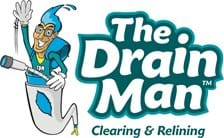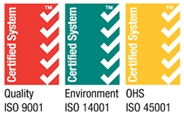Storm water is the water produced by the rain that falls on the roof of a building and flows down into its gutters and downpipes. It is also any rainwater that runs off paved areas, driveways, paths, gardens and is collected through underground gutters and drains. (This water is separate from the water that flows from your sinks, showers, toilets, bath, washing machine, dishwasher etc INSIDE your house. This is sewer water and goes into a different drainage system.)
Stormwater is all the water OUTSIDE your house. Sewer deals with all the water INSIDE your house.
All private homes and commercial buildings have some sort of drainage system to collect and carry the rainwater away from the property and into underground stormwater drains where it generally drains into rivers and creeks and out to sea.
Storm water includes everything that the rain water carries with it and what it collects from surfaces it runs over. So this can include organic matter like leaves, litter and soil, and any residues from paths and driveways. This debris can build up inside your stormwater drains creating problems by blocking up your drains and pipes.
The other major problem that occurs with stormwater drains is that tree roots can easily get inside your stormwater drains. They love the water that collects inside the drains and also all the organic matter that collects in there, like decaying leaves etc. This is like compost for them. It's both food and water. Over the years, once tree-roots get into your stormwater drains, they grow very fast and thick and will quickly block up the entire drain.
Some properties have stormwater pits that collect excess water and temporarily store it to help prevent flooding when there is heavy rain. These large pits then slowly discharge the water through a series of connected storm drainage pipes. Both the drain pipes and the storm water drainage pits can become blocked by debris.
If you are the property owner, it's your responsibility to maintain your storm water infrastructure. If you notice any issues during heavy rain like overflowing gutters, blocked downpipes or flooding, it is time to call in the experts. These are signs you could have serious problems inside your drains that need fixing.
The unknown problem causing stormwater drain blockages
Unfortunately, in recent years, both sewer and storm water drainage pipes have begun to change from 100mm in diameter to a thinner 90mm diameter. Being narrower, they are more susceptible to blockages. Sadly, the majority of new houses built in the last few years have these new narrower 90mm storm water drains. Many have also not been laid completely in compliance with regulations so generally they have more issues.
Smaller diameter stormwater drainpipes also are a bit more difficult to clear. However the experienced and skilled team at The Drain Man will answer any challenge and resolve your problems if you do have these new 90mm drainpipes.
The Drain Man has the equipment and expertise to keep your storm water drains flowing well. We aim to always fix your issues efficiently. First we obtain a detailed understanding of your drain blockages and other problems over the phone when you call us. This helps us pre-determine the possible causes so that when we attend your property, we can survey the situation immediately and get to work to solve your problems fast!
We use a specialised CCTV inspection camera inside your drain so we can see exactly what's going on inside your drainpipes to cause the blockage. We then use a high-pressure water jet or a drain clearing machine to unblock the drain.
We then do another camera inspection to confirm the blockage has been successfully cleared. We also use this footage to assess the pipes for any cracks or broken sections. If we believe there are additional issues with your stormwater drainpipes, your plumbing specialist from The Drain Man will provide you with a long-term solution that will ensure your problems do not recur.
Do damaged stormwater drains have to be dug up?
If your storm water drainage system has been damaged by tree root intrusions; is old, cracked or broken; has been crushed or is just heavily blocked by anything, please don’t despair. You DON'T have to dig up and replace your damaged, broken or blocked stormwater water pipes. After they have been cleared, if they need repair, the team at The Drain Man can reline them from the inside. There is NO DIGGING necessary, with relining so there will be no damage or disruption to your gardens or paths and no need to restore them after the work is done.
With relining of your drains, we cut a length of new lining for inside your drains. This is pulled into your existing drainpipes and carefully positioned into place. The liner is then inflated and held in place until it is firmly pressed against the inside of your drain and hardens. Once the new lining has hardened inside your drain, it makes your drain even stronger than it was before. The new lining inside your storm water pipes carries a lifetime warranty so you have nothing to worry about again. Relining is highly recommended to keep your storm water drain system working perfectly for years to come.
Prevent Storm Water Drainage Issues
There are simple things you can do around your property to help reduce blockages in your storm water pipes, as well as minimise pollutants entering our waterways.
- Clean up any debris that can easily be washed into your storm water drains during heavy rain, such as leaves and grass cuttings.
- Ensure that any gravel and soil on your property will not be easily washed away and down inside your stormwater drains
- Clean up after your pet, especially if you have a dog that goes to the toilet in your back yard
- Never pour paints or chemicals down ANY drain - please dispose of them at designated recycling centres.
- Wash your car on the grass, or at a commercial car wash.
- If you have a septic system, keep it well maintained to prevent leaks.
Don’t risk the next heavy downpour causing damage to your property. Speak to one of our friendly team about your storm water drainage solutions today by calling or enquiring online.
If you have any questions about pipeline inspections, drain clearing or pipe relining at your premises, contact our friendly team. We’ll be happy to help in any way we can.






